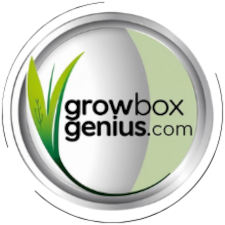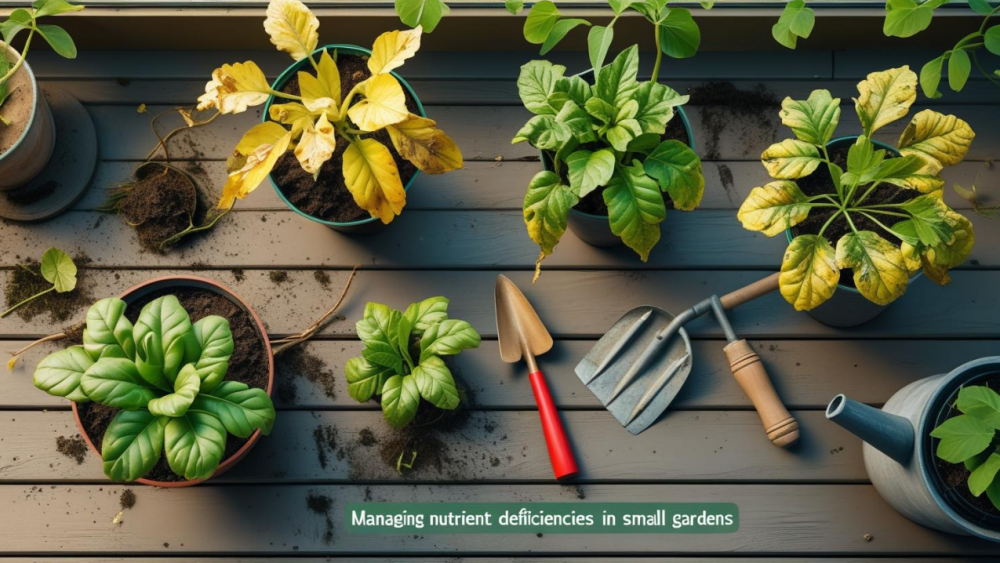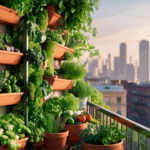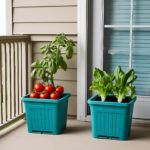Nutrient deficiencies can quickly creep into small-space gardens when you least expect it. Your once-thriving plants are starting to fade, curl, or stall in growth. Whether you’re working with a windowsill herb box or a compact jungle on your balcony, keeping your plants healthy starts with understanding the root of the issue—literally.
That being said, let’s explore what causes these deficiencies, tips on how to identify them, and the simple steps you can take to build a thriving garden in even the tiniest spaces.
Identify issues early and feed your garden right—even with limited space
🪴 Soil Conditions: The Foundation of Plant Nutrition
Soil composition directly affects how well your plants absorb nutrients. In small gardens or containers, problems like soil compaction, poor drainage, or sandy soil can block roots from getting at the essential minerals, roots simply can’t absorb what they need. Boosting texture and drainage with compost gives them a clearer path to nutrients.
Watch for:
- Waterlogged soil in pots without drainage
- Dense or sandy mixes lacking organic content
- Shallow soil volume, limiting root spread
Improving texture and drainage with compost and organic matter can restore flow and access to nutrients. You may need to upscale your pot size in some cases to create more volume for the roots.
⚖️ pH Balance: A Silent Garden Killer
Even if your soil has all the right nutrients, they might be locked away if the pH is off. When soil is too acidic or too alkaline, essential minerals like iron and phosphorus become unavailable to your plants—kind of like trying to unlock a door with the wrong key.
Most vegetables grow best in soil with a pH between 6.0 and 7.0. But in small gardens and containers, pH levels can swing more easily due to rainwater, fertilizers, or the type of soil mix you use.
🧪 How to Adjust Soil pH Naturally:
- To lower pH (make soil more acidic):
- Add coffee grounds, compost tea, or pine mulch.
- Incorporate leaf mold or peat-based materials to slowly acidify soil.
- To raise pH (make soil more alkaline):
- Mix in crushed eggshells, wood ash, or a small amount of baking soda dissolved in water.
Always adjust slowly and retest after changes. A balanced pH keeps your garden’s nutrient pathways open and active—especially in the tight quarters of small-space gardening.
🚰 Watering & Root Health: Striking the Right Balance
Too much or too little water disrupts how nutrients dissolve and move through plants. Also, physical barriers like hardpan layers or pest-damaged roots reduce nutrient uptake.
Tips:
- Water deeply but infrequently
- Ensure pots have adequate drainage
- Check for signs of nematodes, root rot, or root crowding
Healthy roots are the gatekeepers of nutrient uptake. If pests like nematodes, diseases, or compaction limit their growth, even the best soil won’t help. Pair that with too much or too little water, and nutrients can’t travel effectively.
🧪 Identifying Nutrient Deficiencies: Know the Signs
Early identification is your best defense against long term damage. Here are key symptoms to watch for:
🟡 Nitrogen Deficiency
- Older leaves turn yellow (chlorosis), especially at the base
- Growth slows to a crawl
Fix: Add compost, aged manure, or fish emulsion
🟣 Phosphorus Deficiency
- Stunted growth, dark green or purplish leaves
Fix: Bone meal, banana compost or rock phosphate
🟠 Potassium Deficiency
- Brown or curled leaf edges, weak stems
Fix: Use Wood ash (sparingly) or kelp meal
🟢 Iron Deficiency
- Yellowing between green veins on young leaves
Fix: Iron chelate or lower the pH slightly
🔵 Magnesium Deficiency
- Yellowing between veins on older leaves
Fix: Epsom salts in water
⚪ Zinc or Manganese Deficiency
- Pale, speckled, or distorted leaves
Fix: Micronutrient sprays or balanced organic amendments
Regular visual checks and record-keeping can help you stay ahead of these issues.
Nutrient Deficiencies In Plants – What You Need To Know
🌿 Feeding Your Soil: Organic Solutions That Work
One of the most effective ways to manage nutrient deficiencies in small-space gardens is to focus on building healthy, living soil. Rather than reacting to problems after they appear, enrich your soil proactively to support long-term plant health.
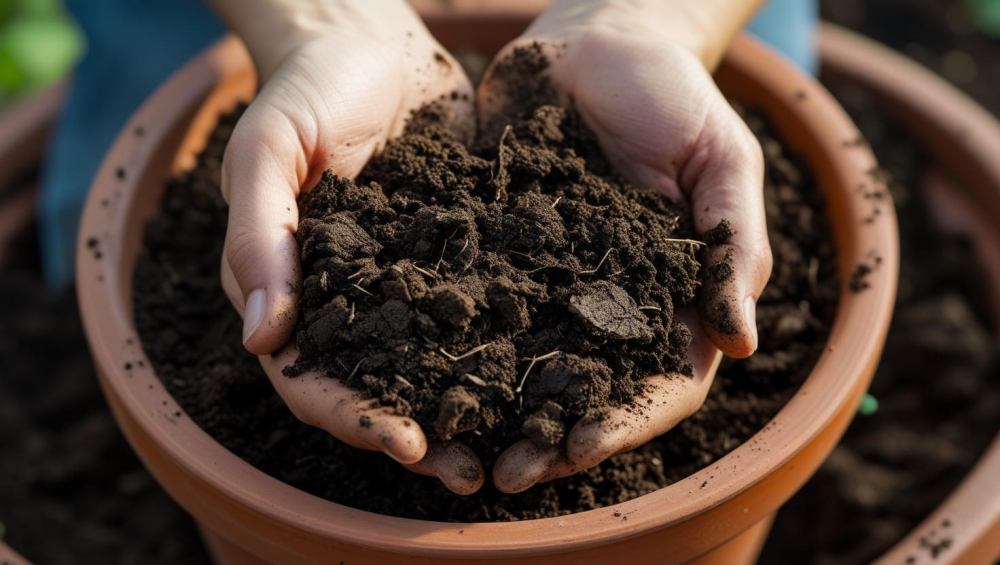
Think of soil as more than just a medium—it’s a nutrient delivery system, microbial ecosystem, and water reservoir all rolled into one. When you nurture your soil, you’re nurturing every plant it supports.
Whether you’re gardening in a pot, a raised bed, or a corner of your patio, what’s in your hands—literally and figuratively—determines your garden’s success.
🌱 Add Organic Matter
Adding organic matter improves soil structure, water retention, and microbial activity—all critical in tight urban environments.
- Use compost, leaf mold, or well-rotted manure to feed the soil and improve aeration.
- Plant cover crops like bush beans to naturally fix nitrogen and restore balance between growing seasons.
🧴 Use the Right Fertilizers
Tailor your fertilization methods for containers and raised beds where nutrient leaching is common.
- Apply liquid organic fertilizers for quick absorption—perfect for potted plants.
- Use bone meal to boost phosphorus and fish emulsion for a gentle nitrogen lift. Top Fertilizers For Urban Garden Growth
Rotate and Rest
Nutrient cycling and pest prevention both improve when you practice rotation—even in small spaces.
- Rotate crops between heavy feeders and light feeders.
- Give containers a seasonal break or plant cover crops during dormant months.
🦠 Nurture Soil Microbes
Soil life is the unseen engine behind nutrient uptake. Keep these microscopic allies happy.
- Avoid synthetic pesticides that disrupt beneficial fungi and bacteria.
- Inoculate with mycorrhizae to enhance root systems and improve phosphorus availability.
- Maintain consistent moisture levels without waterlogging the soil.
Don’t Make This Container Mistake!
❓ FAQ: Managing Nutrient Deficiencies in Small-Space Gardens
Common signs include yellowing leaves, stunted growth, brown or curling edges, and poor flowering or fruiting. These symptoms often start with older leaves and progress upward.
Nitrogen deficiency is usually indicated by pale or yellowing older leaves. You can fix it by adding compost, aged manure, or using organic liquid fertilizers like fish emulsion.
Yes. Overwatering can leach nutrients out of the soil and disrupt root function, preventing proper nutrient uptake. Ensure your containers have good drainage and water consistently but not excessively.
Prevent deficiencies by building healthy soil: add compost, rotate crops, use mulch, and avoid synthetic chemicals that harm microbes. Test soil pH regularly to keep nutrient availability balanced.
🌸 Conclusion: Smart Gardening in Small Spaces
Successfully managing nutrient deficiencies in small-space gardens isn’t just about using more fertilizer. It’s about creating the right environment for roots to thrive.
To recap:
- Use containers with proper drainage.
- Test your soil regularly and adjust pH or nutrients as needed.
- Match plant choices to your space, light, and container size.
- Focus on feeding the soil, not just the plant.
By supporting soil life and monitoring plant health closely, even the smallest garden can yield big results. With a proactive mindset and the right organic practices, you’ll grow a vibrant, resilient garden that thrives season after season.

